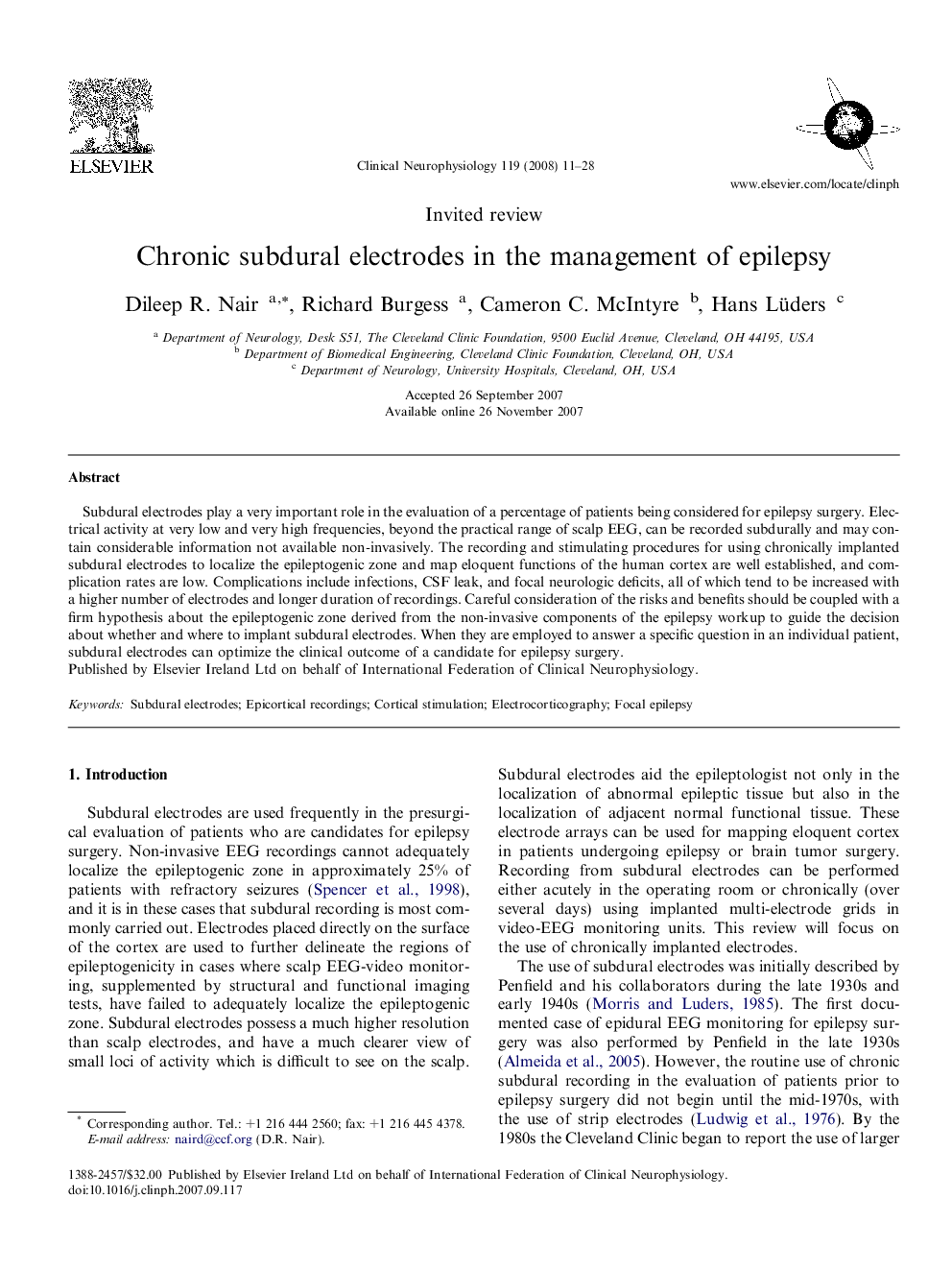| Article ID | Journal | Published Year | Pages | File Type |
|---|---|---|---|---|
| 3047037 | Clinical Neurophysiology | 2008 | 18 Pages |
Subdural electrodes play a very important role in the evaluation of a percentage of patients being considered for epilepsy surgery. Electrical activity at very low and very high frequencies, beyond the practical range of scalp EEG, can be recorded subdurally and may contain considerable information not available non-invasively. The recording and stimulating procedures for using chronically implanted subdural electrodes to localize the epileptogenic zone and map eloquent functions of the human cortex are well established, and complication rates are low. Complications include infections, CSF leak, and focal neurologic deficits, all of which tend to be increased with a higher number of electrodes and longer duration of recordings. Careful consideration of the risks and benefits should be coupled with a firm hypothesis about the epileptogenic zone derived from the non-invasive components of the epilepsy workup to guide the decision about whether and where to implant subdural electrodes. When they are employed to answer a specific question in an individual patient, subdural electrodes can optimize the clinical outcome of a candidate for epilepsy surgery.
